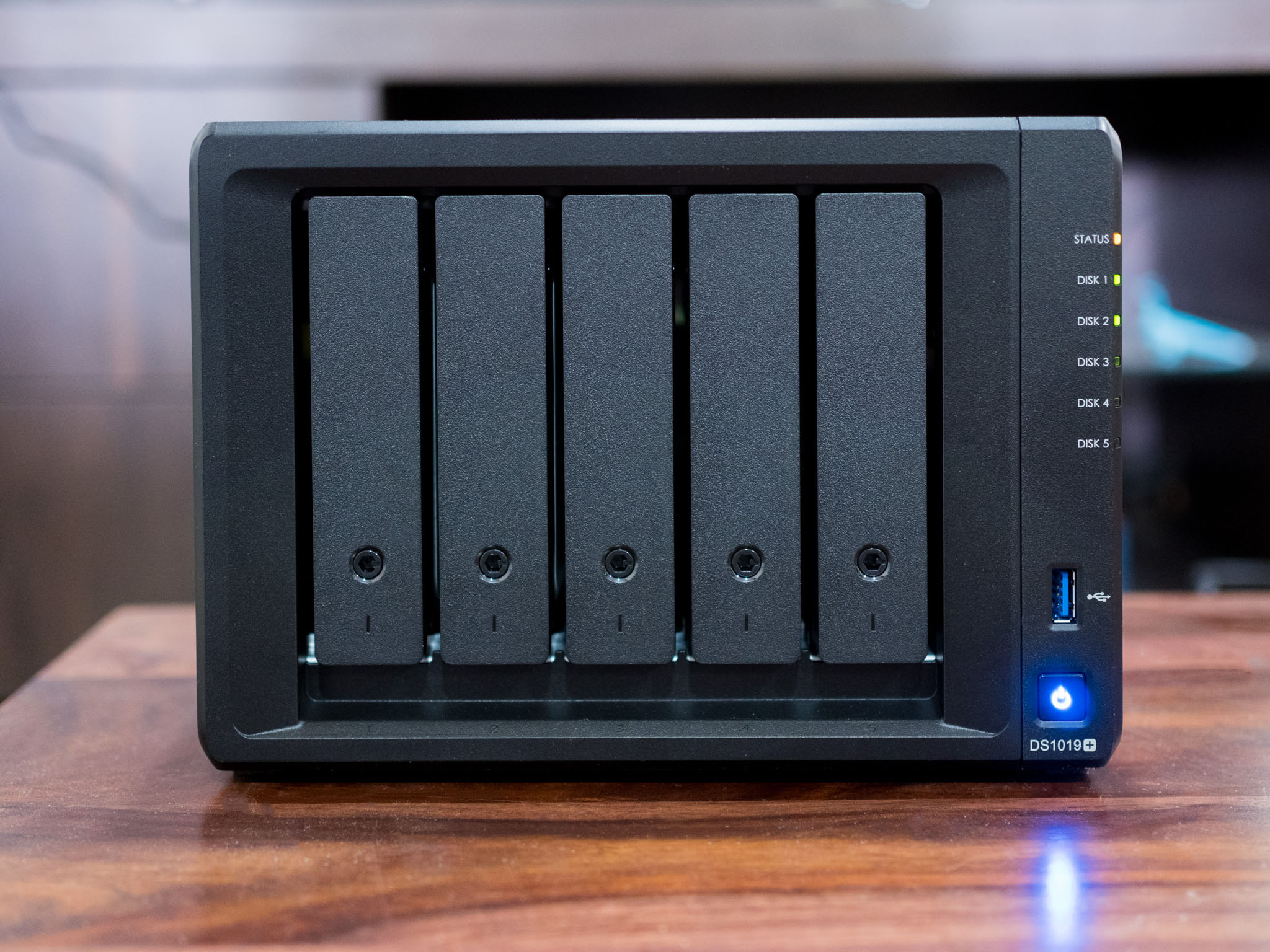Android Central Verdict
Bottom line: The DS1019+ is the perfect NAS for streaming 4K content across your home network, and it also doubles as an ideal option for small businesses thanks to the robust Celeron J3455 chipset and extensible software.
Pros
- +
Excellent performance
- +
Dual 4K transcode
- +
NVME M.2 SSD slots
- +
8GB of memory
- +
Extensible software
Cons
- -
No 10Gbps Ethernet
- -
Expensive
Why you can trust Android Central
A home media server is an invaluable tool for backing up data and streaming content across devices on your home network. Most network-attached enclosures go above and beyond, offering a robust set of tools that include a mail server, private cloud storage, and even a custom VPN server.
Synology has been making excellent products in this space for nearly two decades now, and it caters to home users as well as small offices. The DiskStation DS1019+ falls under the brand's enthusiast line, offering a diverse set of features for power users. The NAS is particularly interesting as it offers dual 4K H.265 transcode, making it the ideal NAS for streaming 4K content across your home network. It also has two NVME M.2 SSD slots for fast caching, 8GB of built-in RAM, and highly versatile software that's the best you'll find in this category.
In short, what you need to know is that the DS1019+ is a fantastic NAS that gets just about everything right.
DiskStation DS1019+ Design and features
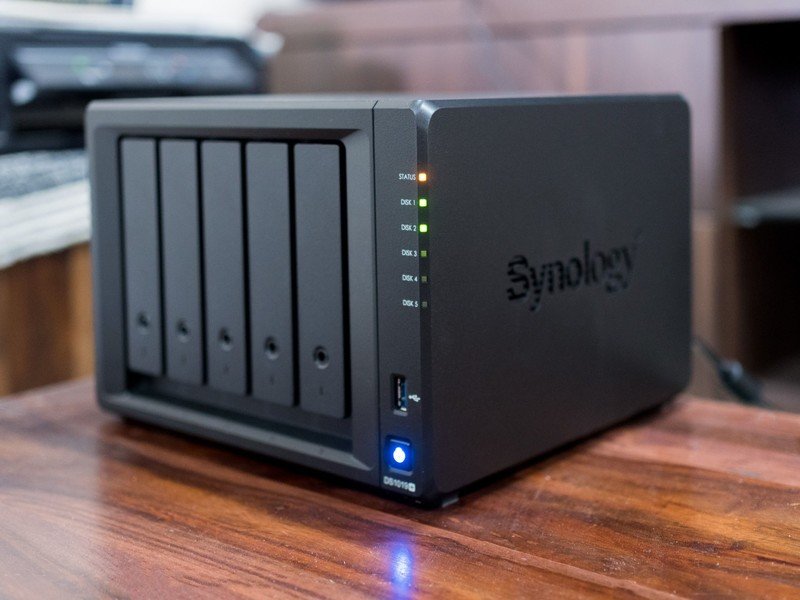
The DS1019+ is a five-bay Network Attached Storage (NAS) that's powered by a quad-core 1.5GHz Intel Celeron J3455 chipset and 8GB of DDR3L RAM. You can slot in 16TB hard drives in each bay, with the NAS allowing for up to 80TB of native storage and another 80TB with Synology's DX517 expansion bay.
From a design point of view, the DS1019+ looks identical to Synology's recent offerings. The outer shell is made out of plastic, and the front is dominated by five drive bays that are individually lockable using the bundled key. Each bay has a drive caddy that easily lets you mount an HDD without any screws, and the drive installation mechanism itself is about as straightforward as it gets. All you need to do is install the drive in its bay, mount the plastic retaining bars, and slide the drive tray into the NAS enclosure.
You'll find the LED status indicators on the right, with a status indicator joined by an LED for each individual drive. The power button is located at the bottom, and you also get a USB 3.1 Gen 1 port that lets you connect an external drive to the NAS.
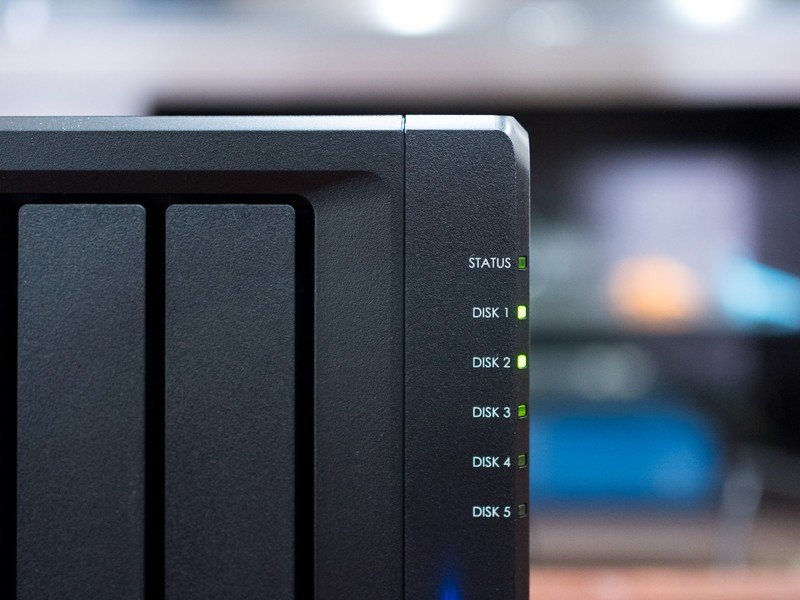
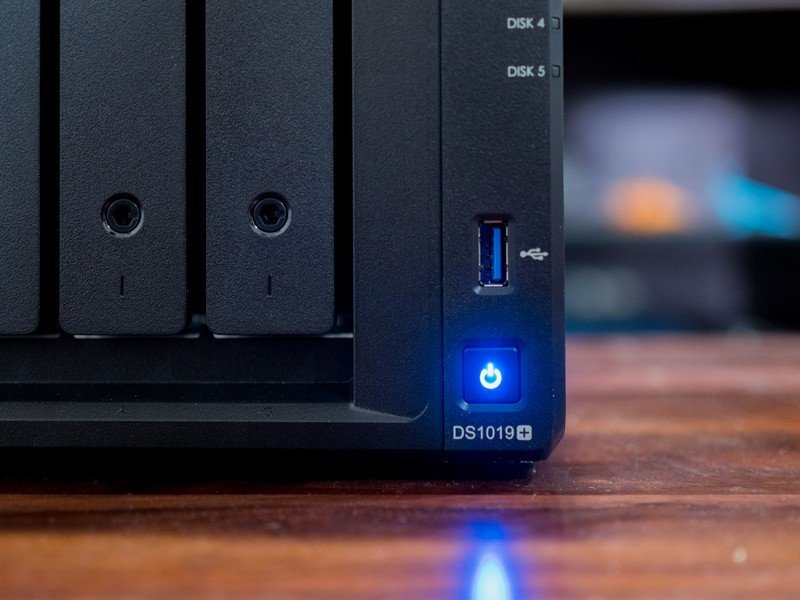
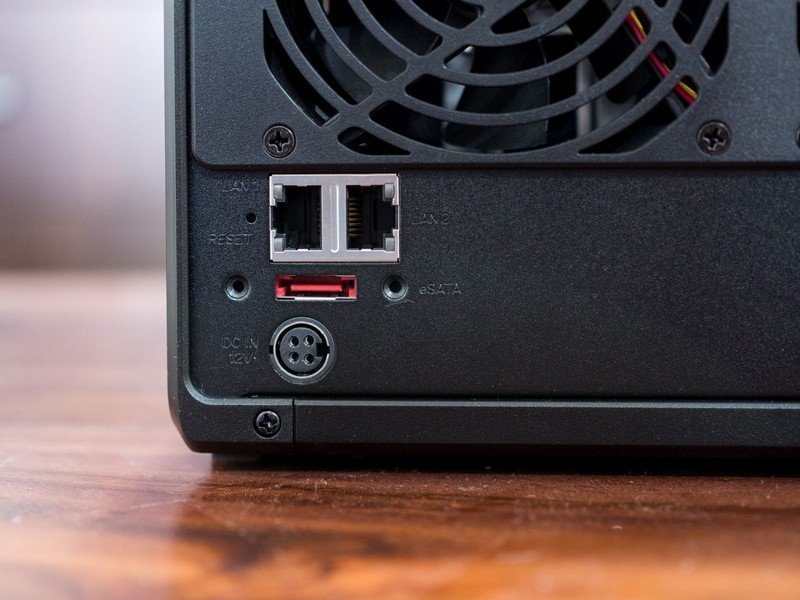
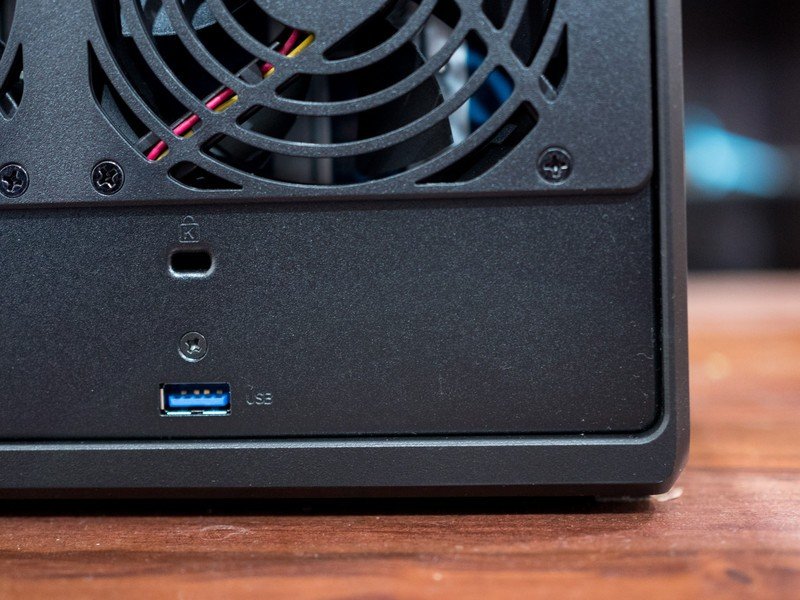
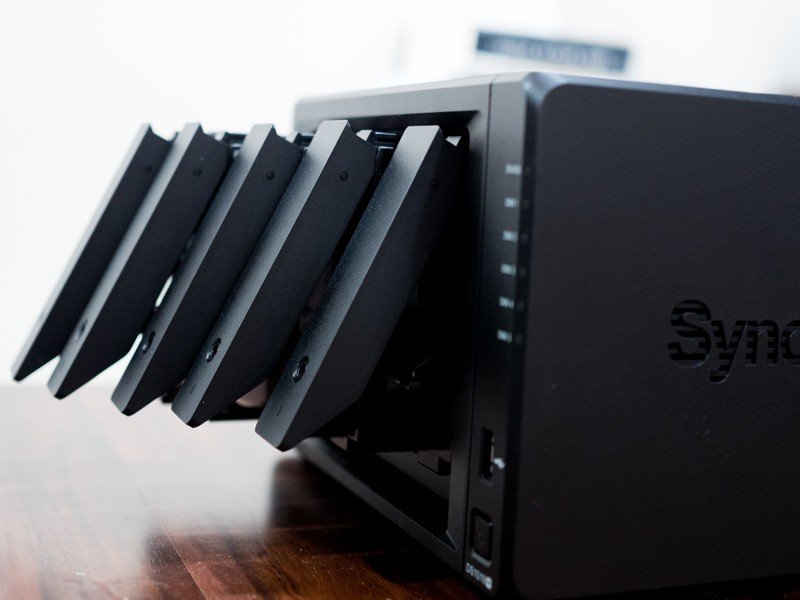
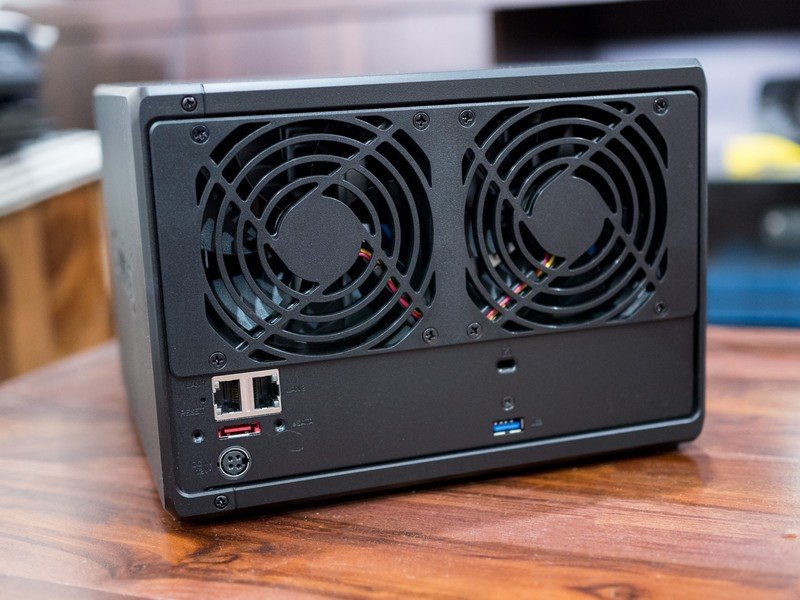
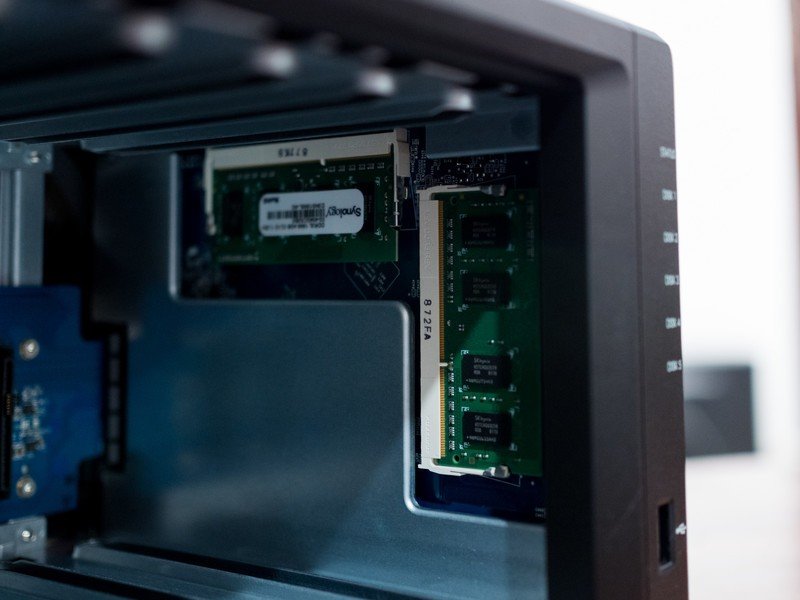
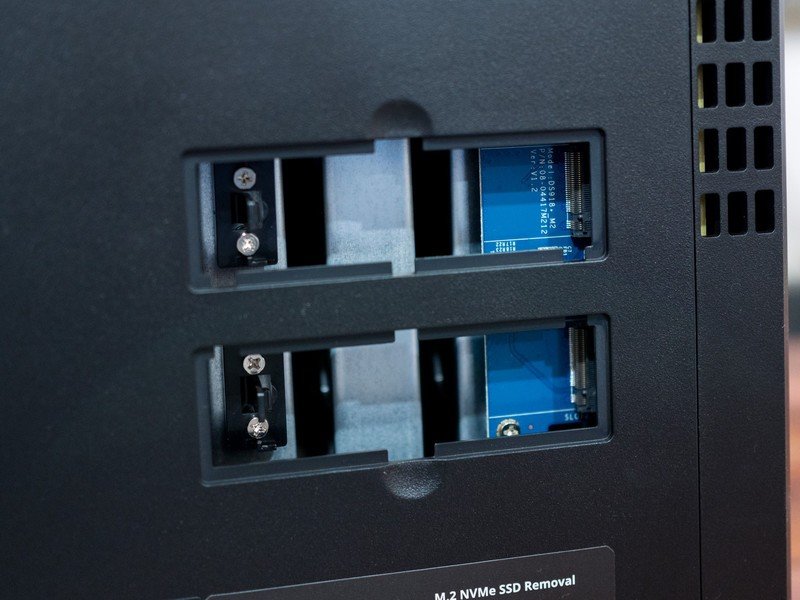
Round the back, the DS1019+ has two 120mm fans that run at 1900RPM, and they're relatively quiet at under 25dB. You do get the option to customize the fan speed in the software settings. Idle power draw is at just 10W with a single HDD, and even with five drives, it doesn't go over 40W — making the DS1019+ a great option for a small office server.
Under the fan, you'll find two Gigabit Ethernet ports that can be bridged to run in Link Aggregation mode. There's also a second USB 3.0 port and an eSATA port, and while it isn't widely used anymore, it lets you hook up Synology's DX517 expansion unit should you wish to extend the storage of the NAS.
Up to 80TB of storage across five drive bays, and 8GB of RAM out of the box.
At the bottom, the NAS has four rubber feet that do a great job of minimizing the vibration from the whirring drives, and there are two slots for M.2 SSDs. In this case, the SSDs aren't used for storage but for faster caching. You'll also find two SO-DIMM slots that are tucked away on the inside right corner of the enclosure, and the DS1019+ comes with two 4GB modules of DDR3L RAM installed out of the box. However, you won't be able to increase the memory beyond 8GB.
You'll find a 120W power adapter along with two Cat5e Ethernet cables included in the package, and overall the DS1019+ falls in line with what Synology has offered with its enthusiast models over the last two years. I would've liked to see an HDMI port at the back as well as 10Gbps Ethernet connectivity, but it is possible these are coming with the next refresh.
DiskStation DS1019+ Software overview
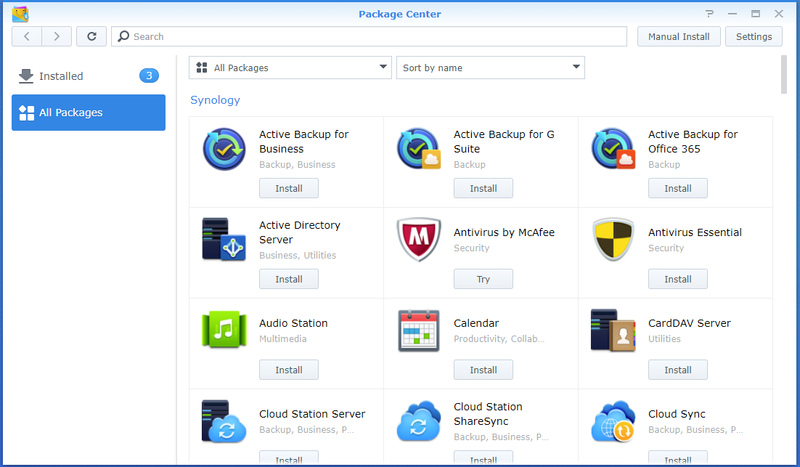
Hardware is just one part of the story with a Synology NAS; what has truly allowed the brand to stand out in this segment over the last decade is its software. The web-based DiskStation Manager (DSM) operating system continues to be the best in the industry, and with the latest DSM 6.2 release, it has picked up a host of new features.
But first, a note on the installation. Setting up the DS1019+ takes just 10 minutes, and all you need to do is install the hard drives, attach the Ethernet port to your router, hook up the NAS to the wall outlet, and hit the power button. Then navigate to find.synology.com from a browser, and Synology's web assistant will search for the NAS on your home network and install DSM. You'll be able to set up an admin account and password to access DSM, and also configure remote access that lets you access the NAS from anywhere in the world.
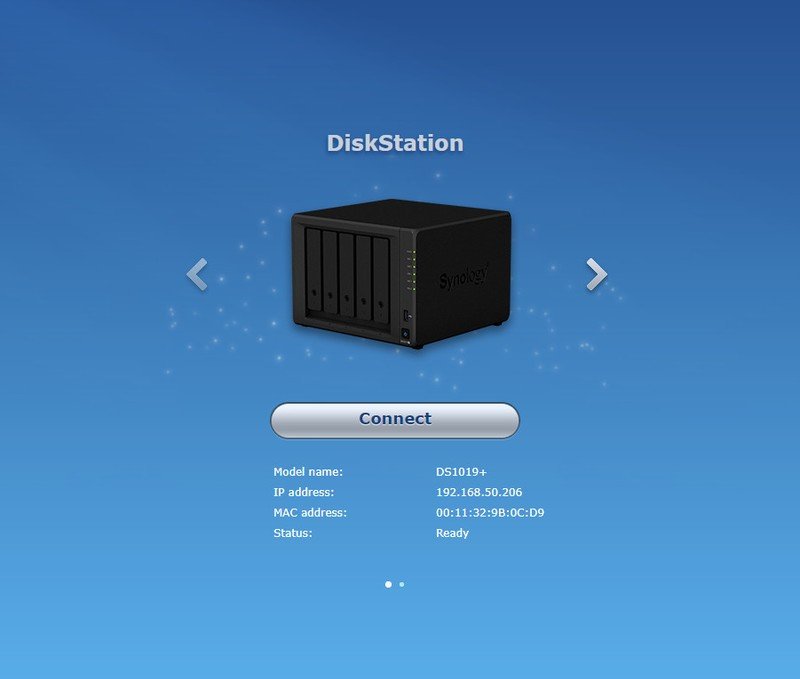
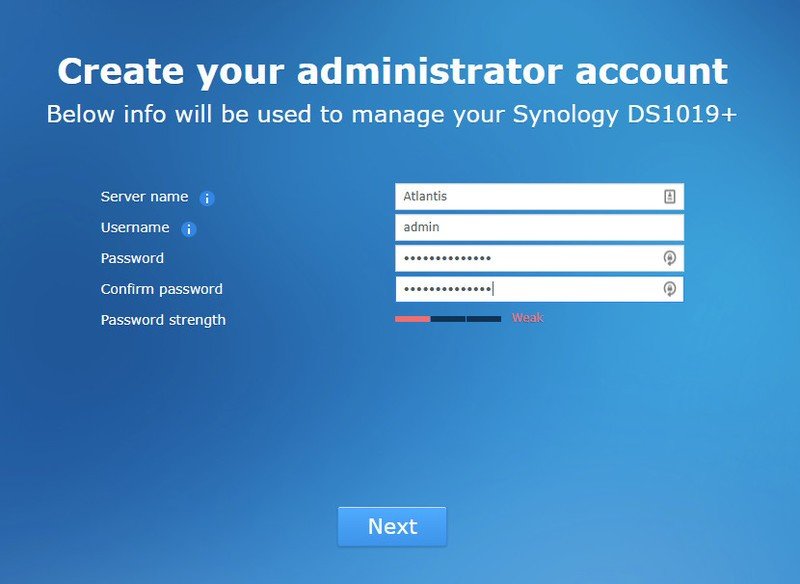
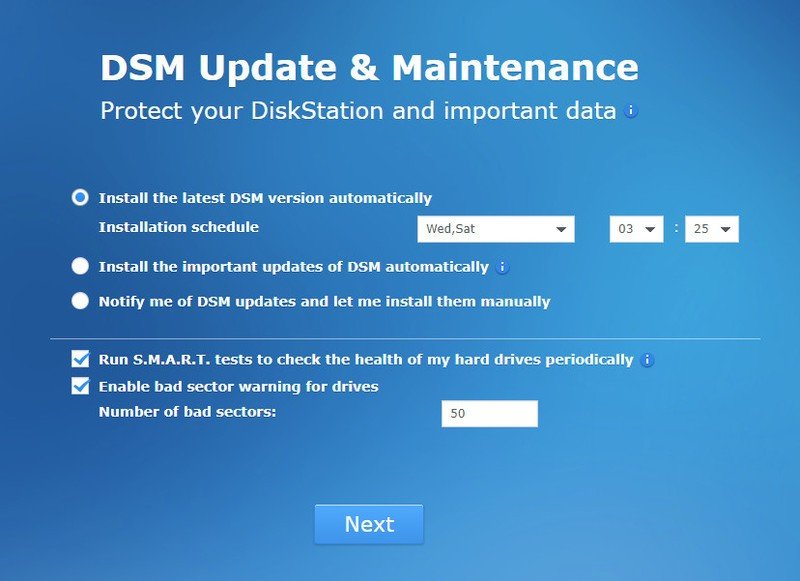
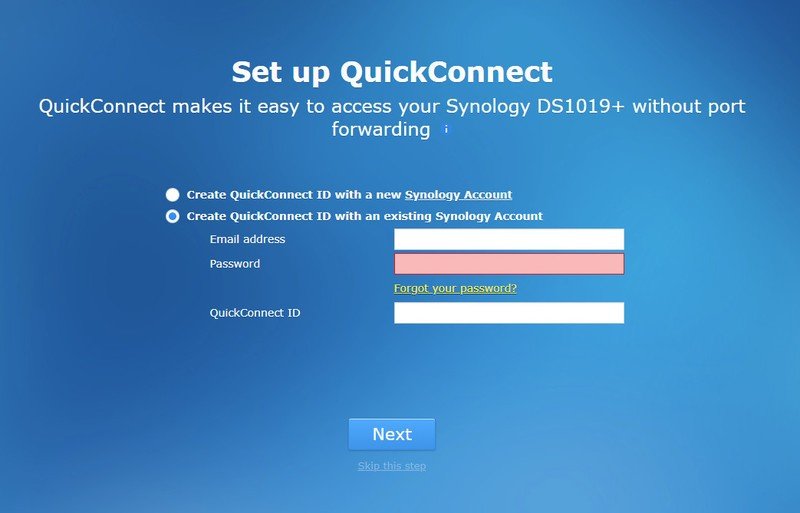
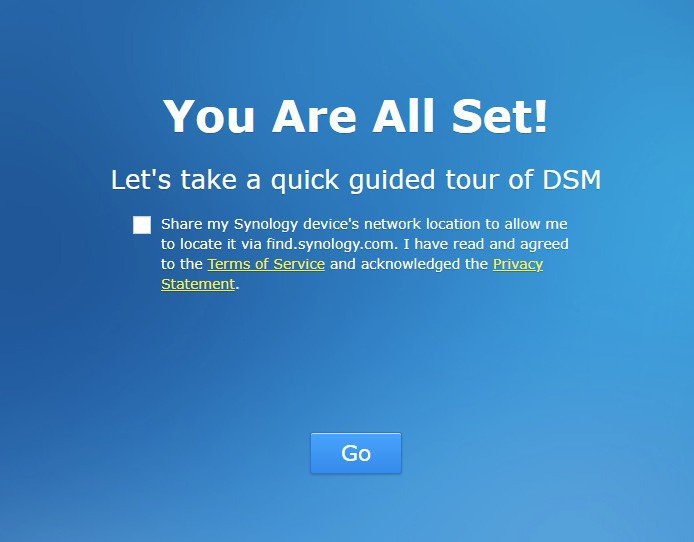
Once you've set up DSM, you'll be able to log into the web-based interface from any browser. As the DS1019+ is catered to enthusiasts and small businesses, you get most packages that Synology has to offer on the software front. That includes an Active Directory server, antivirus client, VPN client, mail server, note-taking client, private cloud hosting solution, and so much more.
DiskStation Manager is the best operating system for NAS enclosures, and it continues to get better over time.
There's even the ability to run virtualization services in Docker, and you can host various virtual machines directly on the NAS. You can view and install available packages for the NAS via Package Center. File Station lets you set up the folder hierarchy and enable file sharing across Windows and macOS machines on your home network. Control Panel offers an exhaustive list of configuration settings that let you customize the NAS to your needs, and utilities like Storage Manager let you assign new volumes.
I personally use the NAS to stream media to devices throughout my house or when I'm traveling. Synology's Audio Station and Video Station work great for streaming audio and video, and the brand has mobile clients — DS audio and DS video — on Android and iOS that let you stream music and movies on mobile devices. Audio Station is particularly great if you're like me and have a huge collection of lossless audio files that you'd like to stream on the go. For other devices on my home network, I just rely on DLNA to stream multimedia.
Synology has done a fantastic job balancing DSM's extensibility with ease of use. If you're using a NAS for the first time, there are useful hints throughout the interface that guide you through most of the features on offer. It's this balance that gives Synology the edge in the storage segment, and right now, DSM is the OS to beat for NAS enclosures.
DiskStation DS1019+ Performance
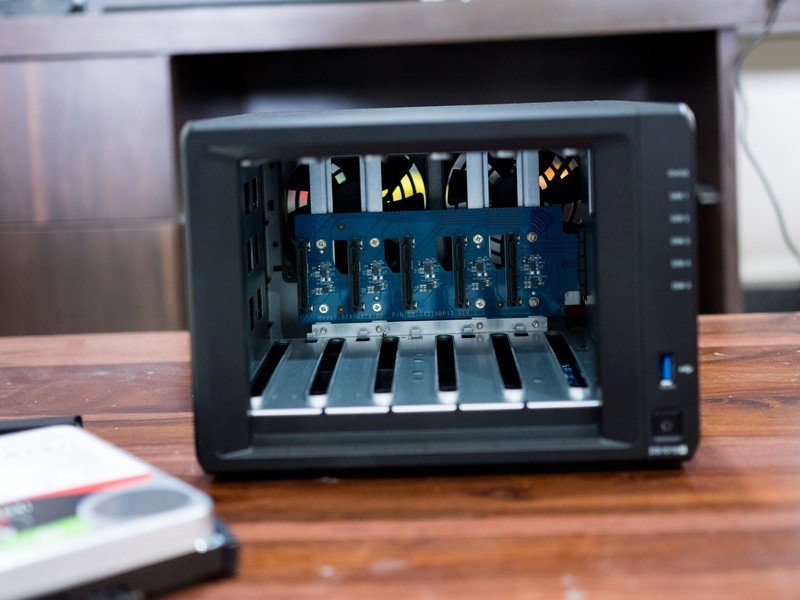
What makes the DS1019+ is its hardware-accelerated transcoding engine that offers dual 4K H.264/H.265 transcode on the fly. That's a big deal, as it facilitates 4K playback on devices that lack the necessary codecs.
The ability to transcode two 4K streams simultaneously makes the DS1019+ a fantastic purchase.
The hardware on offer in the form of a quad-core 1.5GHz Intel Celeron J3455 and 8GB of RAM makes the DS1019+ a true powerhouse in this category. If you're looking to use the NAS in an office environment, the two NVME M.2 slots make a huge difference for IOPS performance.
I used the DS1019+ with two 14TB Seagate IronWolf Pro 7200RPM drives and ran the NAS through a variety of usage scenarios over the course of a month. I routinely transferred thousands of small files to the NAS from my main Windows machine (both are connected via a network switch) and streamed 4K content on several devices at once. I averaged writes of 112MB/s and reads of 110MB/s at all times, and even with several tasks running at once, the DS1019+ managed to hold its own.
DiskStation DS1019+ Should you buy it?
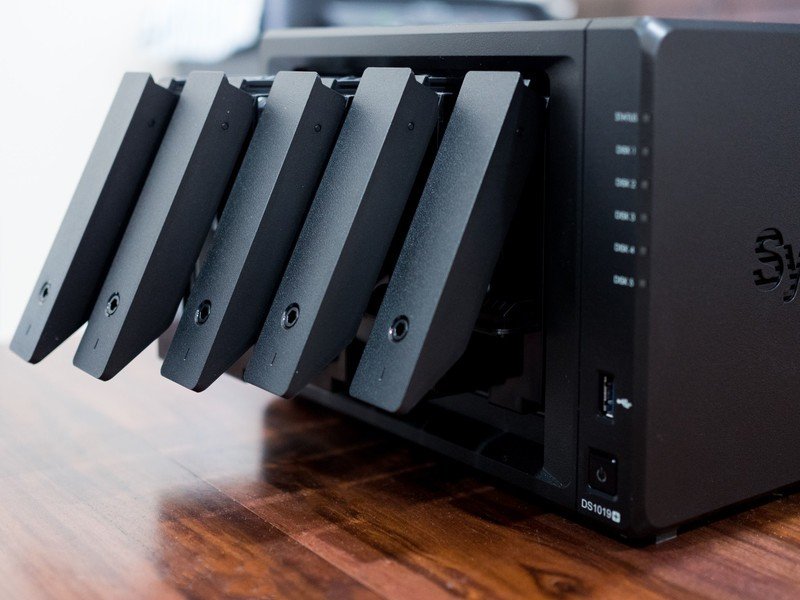
The DS1019+ has everything that you'll ever need from a home media server. The five drive bays can slot in up to 80TB of storage, and if you need more, you can always pick up a DX517 unit and get another 80TB. The robust hardware on offer lets you stream 4K content on just about every device without the NAS breaking a sweat, and the extensible software makes the NAS an ideal option for small businesses.
The DS1019+ pays for itself over time.
I've been using a NAS as a home media server for over seven years now. I started with an older model and switched to a DS414+ back in 2014, and that is still going strong today. That particular NAS is being used alongside a more recent DS918+ that has been my main workhorse for the last 12 months, with the DS1019+ now joining the list. The DS1019+ not only has one drive bay more than the DS918+, but it also has double the memory at 8GB, which makes a sizable difference.
I'm particularly fond of the DS414+ because it ran 24/7 for well over five years without a single issue. That, more than anything else, is why you're paying a premium for a Synology NAS. Sure, you can get a more affordable option from another vendor or build your own machine and use FreeNAS, but Synology's rock-solid reliability combined with the versatility of the DiskStation Manager are well worth the premium. Sure, a NAS is a hefty investment, but it pays for itself over time.
4.5 out of 5
You don't need a DS1019+ if you're just interested in streaming media to various devices in your house. But if you're looking for a NAS that will stream just about everything and has more drive bays than you'll use, you should get the DS1019+.
The $640 asking price is a lot, and that's before you factor in the cost of the hard drives. But the DS1019+ will run for several years without breaking down, and the sheer number of features on offer makes this the ultimate NAS for your home.

Harish Jonnalagadda is Android Central's Senior Editor overseeing mobile coverage. In his current role, he leads the site's coverage of Chinese phone brands, networking products, and AV gear. He has been testing phones for over a decade, and has extensive experience in mobile hardware and the global semiconductor industry. Contact him on Twitter at @chunkynerd.
